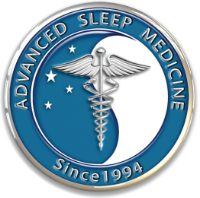Sleep apnea is a common sleep disorder defined as the cessation of breath during sleep. This leads to reduced oxygen flow and poor sleep quality.
When oxygen levels dip during sleep apnea, the brain signals the body to partially wake up. The person's sleep is disturbed and he is never allowed to sink into deep, restorative sleep stages. People with severe sleep apnea can go through this process hundreds of times each night. Often, people do not remember this happening and think that they have slept as normal. However, they wake up feeling exhausted, groggy, and unrested.
People suffering from sleep apnea deal with not only the negative effects of sleep deprivation, but also the strain of trying to cope with oxygen deprivation at night. This puts serious strain on the brain, the heart, and the rest of the body.
What physically happens during sleep apnea?
During obstructive sleep apnea--the most common form of sleep apnea--tissue in the back of the throat collapses into the airway, blocking the breath. This soft tissue includes the tongue, soft palate, tonsils, and adenoids. When you fall asleep, your throat muscles relax, which can cause the tissue to sag into your throat. When the airway is entirely blocked, an apnea occurs.
Read below to learn about the other types of sleep apnea.





